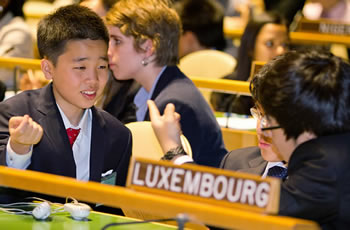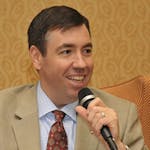 Students these days are great at memorizing dates, timelines, chemistry tables, and grammar. Both the students and our education system have become quite efficient at taking (or administering) tests well. The problem with this examination priority is simple: what we don’t need is a generation of test-takers. The world needs problem solvers. When was the last time you took a test at work? I respect the need to drill the basics, but I’m promoting a new education system philosophy.
Students these days are great at memorizing dates, timelines, chemistry tables, and grammar. Both the students and our education system have become quite efficient at taking (or administering) tests well. The problem with this examination priority is simple: what we don’t need is a generation of test-takers. The world needs problem solvers. When was the last time you took a test at work? I respect the need to drill the basics, but I’m promoting a new education system philosophy.
Remember that book All I Really Need to Know I Learned in Kindergarten? That was a good start for individual “soft skills,” but I’d add these proficiencies to middle and high school curriculum: accomplished verbal and written communications skills, adaptability, empathy, resourcefulness, critical thinking, and problem solving skills. (I will concede it’s difficult to test for empathy.) My education system would also structure significant learning time for the arts, cultures, countries, and languages from around the world. We need the next generation to test off-the-charts for global competency.
This embarrassing old joke covers it:
Q: “What do you call a person who speaks 3 languages?”
A: “Uh, trilingual?”
Q: “Yes. What do you call someone that speaks 2 languages?”
A: “Bilingual.”
Q: “What do you call someone that speaks only 1 language?”
A: “I’m not sure.”
Q: “American.”
The truth hurts. Our early education system is focused on science and math (which is important) but students go home and talk to kids in Johannesburg and Beijing on the internet. While these informal interactions are educational, building cultural competency within the school’s walls is a must-do. While the United Nations focuses on access to education through the Millennium Development Goals (MDGs), in the U.S. our goal should be access to a globalized education.
Much ink has been spilled over global competency in colleges but I want the second grader in Butte, Montana and the fourth grader in Alliance, Nebraska having the same global experiences as the eighth grader in Los Angeles, New York City and Houston. I am a pragmatist though, and recognize the demographic makeup of a community is reflected in its schools so there is even more pressure on the school system and the teachers to deliver some common global literacy.
I’m not alone in this thinking. The business sector expects the future marketplace to be more interconnected and presumes even an unsuspecting entrepreneur to be globally savvy, so shouldn’t our education system develop this? There are plenty of other U.S. policy actors that acknowledge the need for change, such as the National Educators Association and the Council of Chief State School Officers and the Asia Society, but we need to coalesce behind a plan and put it into motion. However, being realistic – we are talking years not months to see this type of change.
So, what can be done now? Let’s better use the tools and programs that exist in schools, that are widely accepted by educators, proven to deliver results for all types of students no matter what their abilities or backgrounds are, and that can be scaled from downeast Maine to downtown San Diego.
Author and poet Victor Hugo best captured this idea with: “There is one thing stronger than all the armies in the world, and that is an idea whose time has come.” The idea whose time has come? Model UN.
For more than 50 years students have stepped into the role of diplomat through Model UN. Historically an afterschool activity or club, the Model UN experience affords students the chance to learn about countries and topics that don’t get much presence in the U.S. media. For years Model UN toiled as an exercise of the privileged. Now it has been democratized and is central to the lives of hundreds of thousands across the world.
UNA-USA is proud of its long commitment and leadership in the Model UN sector. Just 13 years ago UNA-USA launched Global Classrooms to focus on bringing Model UN to underserved schools in major metropolitan areas around the U.S. With local school districts and interested teachers as partners, UNA-USA developed formal curricula, and on an annual basis provides classroom exercises and materials, integrates knowledge from UN experts into program elements, trains teachers on how to administer a program, and hosts annual conferences in each city as well as international conferences each spring in New York City. In addition to the U.S. component, UNA-USA enjoys affiliated Model UN programs in 14 countries.
Ultimately, Global Classrooms, our brand of Model UN, brings international education to students in dynamic ways by showing that there is a broader way to think about issues of conflict, ethnic divisions and global systems. An understanding of these ideas can lead to peaceful solutions – whether at the community or global level. By partnering with school districts, UNA-USA is about to integrate Model UN into classrooms during the school day allowing all students to experience Model UN and begin their journey for global competency. These students walk away from Model UN with life skills and problem-solving experience – not another test score.
Don’t take my word for it – watch Decorum – our short web documentary that shows how two days at the United Nations changed the lives of students from John Adams High School forever.



 View All Blog Posts
View All Blog Posts